Cocklebur
 click to enlarge |
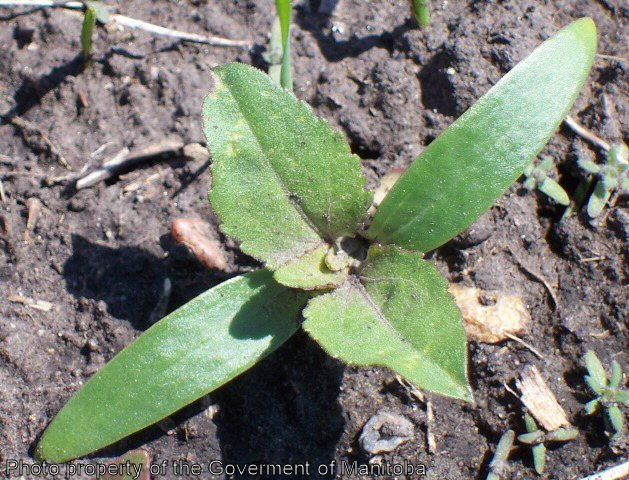 |
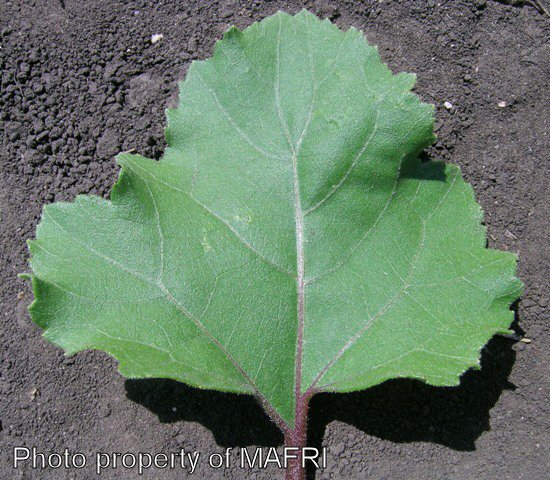 |
 |
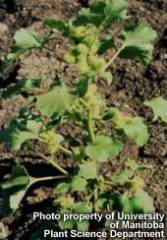 |
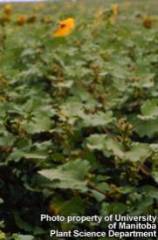 |
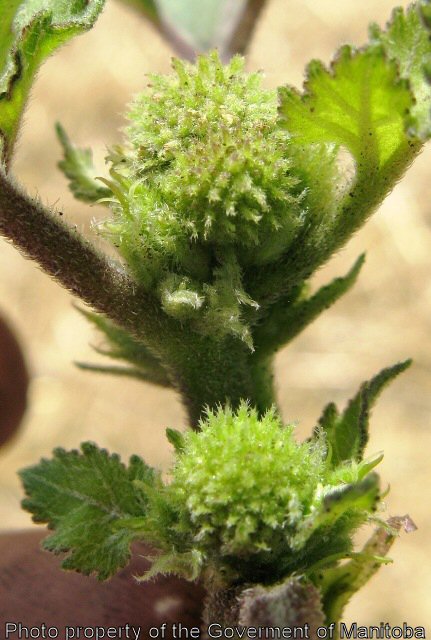 |
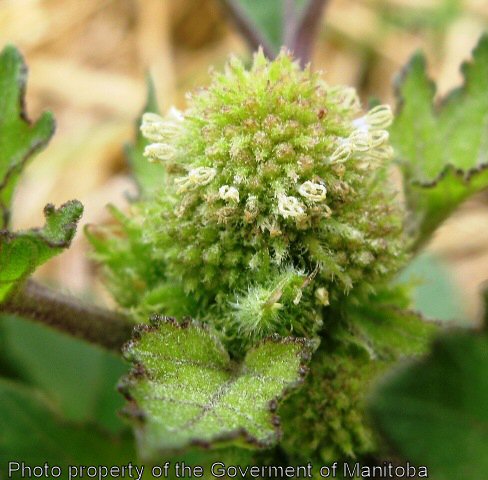 |
 |
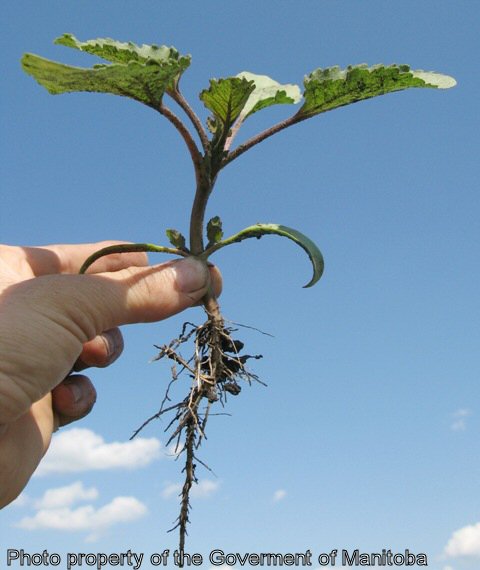 |
Biology
Cocklebur is an annual weed, reproducing by seeds. This weed prefers warmer regions because it is a C4 plant. The stems are ridged, erect, 2 to 4 feet tall, branched, sometimes purple to black spotted, and rough. The leaves are alternate, triangular to heart-shaped, rough on both sides with long petioles. The margins of the leaves are coarsely toothed. Flower heads are small, borne in the axils of leaves and ends of branches. Male and female flowers are separate. Male flowers are uppermost on the plant axis. The seed pod or bur is one complete flower head containing 2 female flowers. Each bur contains 2 black, flattened, ribbed, achenes; one seed per flower. Burs are 1.5-3 cm long x 1-2 cm wide, covered with long hooked prickles, 2 curved spines at the tip, and green to brown in colour.
Cocklebur is a prolific seed producer that is easily spread because of its bur-like seed head. Burs are irritant to livestock and humans and contaminate the wool of sheep. Seed and seedlings contain a substance toxic to livestock.
Scouting Techniques
Take a minimum of 20 weed counts across the field. Check roadsides, pastures, waste areas, and low lying areas which are wet in spring and fall for patches of the weed.
Threshold/Yield Loss
This is a very competitive weed. Infestations in soybeans can cause severe (60-70%) losses due to reduced yield, increased moisture content of beans at harvest, and the presence of foreign material.
Control Tips
- soil and foliar applied herbicides used for selective control of broad-leaved weeds
- Group 9 &10 in herbicide tolerant crops
